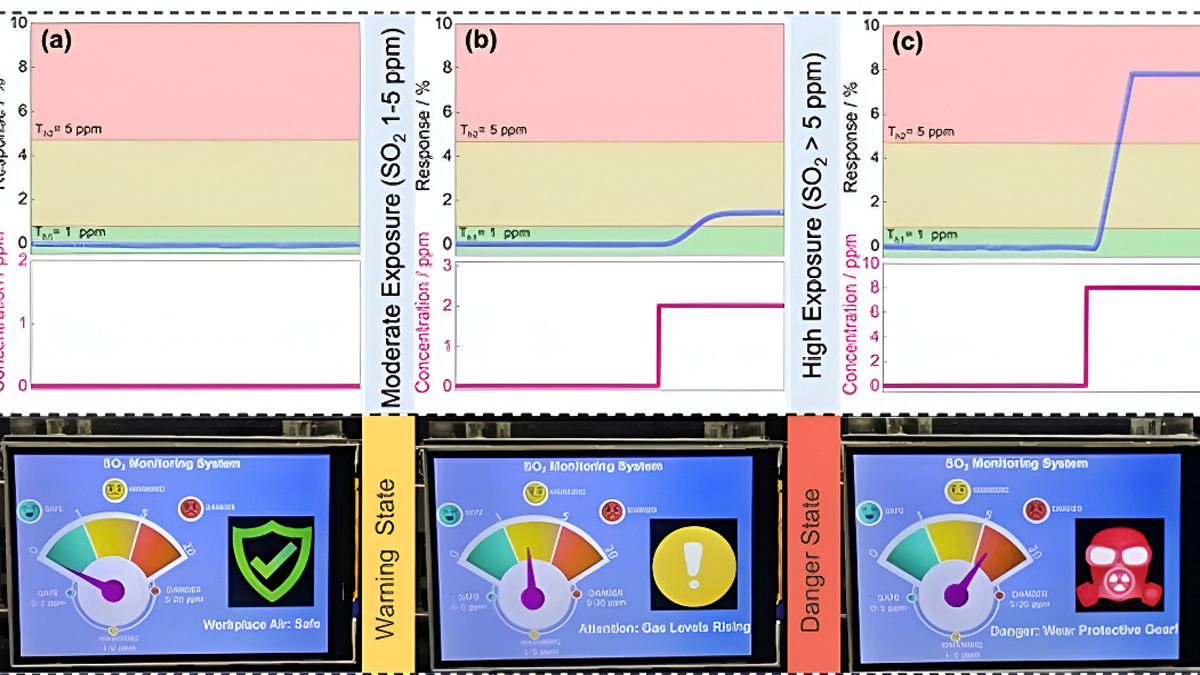Now Reading: New Pocket-Sized Sensor Revolutionizes Early Detection of Asthma and Lung Damage from Sulphur Dioxide
-
01
New Pocket-Sized Sensor Revolutionizes Early Detection of Asthma and Lung Damage from Sulphur Dioxide
New Pocket-Sized Sensor Revolutionizes Early Detection of Asthma and Lung Damage from Sulphur Dioxide

A groundbreaking development in environmental monitoring and public health has emerged from the Centre for Nano and Soft Matter Sciences (CeNS), Bengaluru, with the creation of a novel, pocket-sized sensor capable of detecting hazardous sulphur dioxide (SO₂) gas at remarkably low concentrations. This innovative, low-cost device promises to be a game-changer in the proactive management of respiratory conditions like asthma and the prevention of long-term lung damage caused by this pervasive air pollutant.
Sulphur dioxide, a colorless and highly reactive gas, is a significant component of air pollution, primarily released from vehicular emissions, industrial activities, and the burning of fossil fuels. Even minute exposure to SO₂ can lead to severe health issues, including respiratory irritation, acute asthma attacks, and cumulative lung damage. The challenge has always been the real-time detection of SO₂ at levels low enough to prevent adverse health effects, as existing technologies are often cumbersome, expensive, or lack the necessary sensitivity for trace detection.
The team of scientists at CeNS, an autonomous institute under India’s Department of Science and Technology (DST), has addressed this critical gap by fabricating a sophisticated sensor using a unique combination of two metal oxides: nickel oxide (NiO) and neodymium nickelate (NdNiO₃). Through a simple synthesis process, they’ve created a highly efficient system where NiO acts as the gas receptor, while NdNiO₃ serves as a powerful transducer, effectively transmitting the detection signal. This synergistic approach enables the sensor to identify SO₂ concentrations as low as 320 parts per billion (ppb), a sensitivity that far surpasses many commercially available sensors.
To demonstrate the practical utility of their invention, the researchers, led by Dr. S. Angappane, have developed a portable prototype incorporating this advanced sensor for real-time SO₂ monitoring. The prototype features an intuitive, threshold-based alert system, designed for ease of use by individuals regardless of their scientific background. Visual indicators – green for safe, yellow for warning, and red for danger – provide immediate and clear feedback, empowering users to take prompt action when air quality deteriorates.
The compact and lightweight design of this sensor makes it incredibly versatile, suitable for a wide range of applications. It can be deployed in industrial zones, bustling urban environments, and even enclosed spaces where continuous air quality assessment is crucial. Its high sensitivity, portability, and user-friendly interface offer a practical and accessible solution for monitoring and managing SO₂ pollution, thereby significantly contributing to public health and environmental safety.
This breakthrough underscores the immense potential of material science to deliver tangible solutions to pressing global challenges. As air pollution continues to be a major concern worldwide, devices like this new pocket-sized SO₂ sensor will be invaluable tools for communities to safeguard their health and protect the environment. The research, which has been published in the renowned scientific journal Small, represents a significant leap forward in making sophisticated air quality monitoring technology more accessible to everyone. The sensor was designed by Vishnu G. Nath, with contributions from Dr. Shalini Tomar, Nikhil N. Rao, Dr. Muhammed Safeer Naduvil Kovilakath, Dr. Neena S. John, Dr. Satadeep Bhattacharjee, and Prof. Seung-Cheol Lee.










